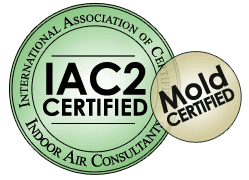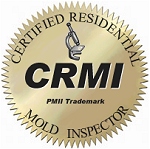|
What is overcurrent protection?The most fundamental requirement in any residential electrical system is overcurrent protection of conductors and equipment. Overcurrent is the condition where the current in amps is greater than the rated current of the equipment or conductors, resulting from an overload, short circuit or ground fault.
An overcurrent protection device protects the circuit by opening the device when the current reaches a value that will cause an excessive or dangerous temperature rise in conductors. There are two basic overcurrent devices: fuses and circuit breakers. Fuses and breakers perform the same function. The advantage of a circuit breaker is that it can be turned back on after the overload situation has been corrected. A fuse must be replaced. When a new fuse is put in or the circuit breaker has been reset, if the overload situation has not been corrected, the circuit will trip again. While it is a nuisance to have to reset a circuit breaker after an overload, it is more of a nuisance to have to replace a fuse, particularly if a spare is not available at home. One other disadvantage of fuses is that it is possible to put in a wrong size. It is unfortunate that 15, 20 and 30 amp fuses all fit into the same fuse block. One of the safety features available for fuses is a fuse rejector washer. This is a small plastic ring which is retrofitted into the fuse block. Depending on its size, this fuse rejector can prevent the wrong size fuse from being screwed into the fuse block. Modern panel boards have a fuse rejection feature that prevents inserting a larger size fuse than intended. It also is possible to insert an improper circuit breaker into a service panel. This commonly is done when an overload situation has not been corrected and the homeowner wants to avoid nuisance tripping. This is a very dangerous practice because a breaker that allows more amperage than the branch circuit wiring can safely handle is a good way to overheat the wiring, which can cause fires to occur. Every residential electrical system should have a main disconnect—this main disconnect being a fuse type or breaker style which both allow for electricity to be shut off to the entire house. Working on a live electrical system is very dangerous. It should be noted that even when the main disconnect is off, the service entrance wires are still live. One should always avoid touching these wires with their hands or any objects. If your system uses fuses for its main disconnect you should make sure that the fuses are properly sized and are the same size. Breaker style disconnects should also be checked for proper size and should be linked together or provided with a single hand so that both must be shut off together. The electrical system of our homes is one of its most important systems. It provides many conveniences and comfort, but it can be dangerous if not respected and not properly maintained. During my inspections, this is one of the areas in which one can never become complacent. There are many areas that must be carefully investigated and inspected. If anyone has a question pertaining to their electrical system, I strongly recommend that he or she contact a qualified and licensed electrician to evaluate the situation. Jonathan Meeker is a certified home inspector and owner of 1CallDone Home and Mold Inspections, located in Hanford and serving the Central portion of Californis. See our site at jnrinspections.com for further information. By Michael Pickens
Submitted by JonathanMeeker on Wed, 05/06/2009 - 07:08.
Reply |
Free recall check on all
appliances with each inspection!
    200% Guarantee DetailsOur 200% guarantee is so straight forward there is no need for fine print or searching endlessly…Here are the details in the front page;
If at time during inspection and before delivery of the report you do not like our services, what we are doing or any other matter, just tell us and we will leave..no questions asked. We will not charge you for the trip, time or anything else. We will then pay up to $300.00 for another inspector of your choice to come and complete your inspection upon presentation of their bill or receipt! |









